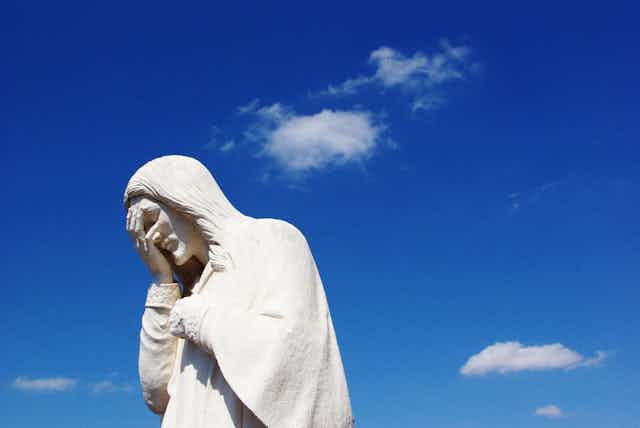Christmas is bound to produce a few questions about Jesus Christ – as was the case with a recent article on The Conversation on the lack of evidence for a “historical Jesus”. Such questions bleed in to another, specific to our time and place in history: how do we make sense of the central figure of Christianity in light of how people see life today?
Readers in the 21st century are far less reverential in their approach to religion than in the age when Christianity dominated.
Challenges to traditional views of Jesus have been on the rise ever since the 17th century. In recent years the freedom to challenge Christian orthodoxy has led to a colourful variety of views. Indeed the whole idea of an “orthdox” view of Jesus seems a bit odd.
There are a hundred versions of Jesus to choose from. Jesus the man with a partner (preferably Mary Magdalene), Jesus the peasant, Jesus the revolutionary, Jesus the worker.
Such portraits don’t need any new evidence; they simply reflect the new possibilities we see in being human. Some of these views, it must be added, fly in the face of any logic and all known evidence.
The discoveries over the last century of the Gnostic Gospels are sometimes cited as support for these interpretations. These are ancient texts that purport to be written by Christian leaders who lived in the centuries after the life and death of Jesus Christ.
More and more of these are being discovered, although some are clearly frauds. Even the genuine ones are not strong evidence.
These Gnostic gospels were generally written a century or more after the life of Jesus, and shaped by the second century idea of a sharp distinction between earthly experience and divine power. Such documents hint of secret powers and knowledge and, reading between the lines, imaginative scholars have found the names of Jesus’ lover, children and secret plans.
The problem is that the language is generally so dark and the documents so distant from the original Jesus that they don’t prove much.
The story of the birth of Jesus is rarely explored in the Gnostic Gospels, since interest in the birth of Jesus only arose as the leaders of the late Roman empire sought to substitute him for the old gods.
The gospels of Luke and Matthew provide a few details – and contemporary scholarship has uncovered a bit more about the world in which Jesus was born. To me, this scholarship is more exciting because it feels like we can make more sense of this mysterious figure.
Archaeology, rediscovered documents and fresh readings of very old documents tell us not just about the Roman province of Judea, in which the birth narratives place Jesus, but also about the Galilean district his alleged parents hailed from. Galilee and its villages, its building projects and its subversion is now far clearer.
The debates of the day between the Greeks, who had sought to defile the Jewish temple, the occupying Romans and their determined strategy, and the various parties of the Jews have all been revealed in sharp detail.
As for the more spectacular parts of the Christmas story, we have a lot more information – and not a lot more certainty.
The tradition of the Persian magi, or Three Wise Men, is very clear.
The Star of Bethlehem has a range of explanations, but none quite explains how the star could be over the place where Jesus lay.
The censuses of the population of Bethlehem are known – but none seems to exactly fit the proposed dates. But then what is the date? You can listen to a lot of ferocious debates on this.
And there is the story, so far. As T.S. Eliot wrote in his 1927 poem Journey of the Magi: “all this was a long time ago, I remember”.
As we prepare to celebrate another Christmas, I doubt if anyone will ever be able to produce the evidence to eliminate faith – or doubt.
See also:
Weighing up the evidence for the ‘historical Jesus’
This article is part of The Conversation’s End of Year series.

